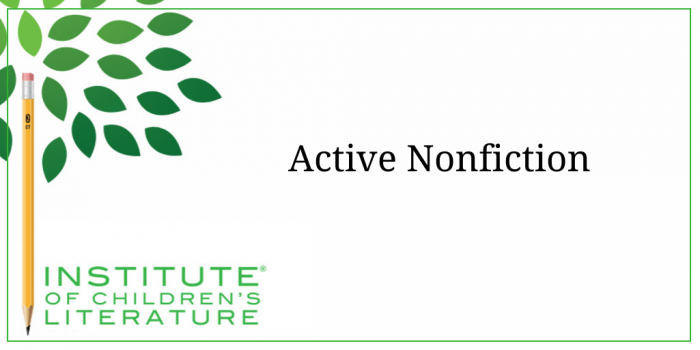1000 N. West Street #1200, Wilmington, DE 19801
© 2024 Direct Learning Systems, Inc. All rights reserved.

We teach our students how to write and get published!
View our Course Catalog >
Nonfiction does many things for readers.
Sometimes it tells them a story.
Sometimes it informs.
But sometimes the whole point of the nonfiction piece is to help and encourage the reader to do something.
Active nonfiction might be as simple as a puzzle book or as complex as a guide to building in Minecraft, but the goal of active nonfiction is less about putting info into the head of the reader and more about getting the reader to do something (and almost certainly learn in the process).
Active nonfiction received a huge boost in the last few years from the maker movement. The maker movement encourages discovery and creation through tinkering. In some ways, the maker movement was the next step in how-to thinking. Instead of simply informing the reader how-to make a very specific item, the maker movement focuses on showing the reader the basic steps to get started in creating something, and the reader then takes the project to the next level with his own creativity.
Maker activities can include art, cooking, woodcrafts, tech, computer coding; it is basically a collective of activities that invite creativity, imagination and individuality in action. Maker books emphasize learning through doing. So you could write a maker book on science that would encourage discovery, experimentation, and creation in the reader. Publishers definitely took note of the maker movement and responded with creative how-to books and even fiction focused on characters who create.
Though active nonfiction can be very complex, such as books on designing and making simple robots, not all active nonfiction is geared toward older readers. Anyone who has ever parented a preschooler can tell you how much joy can come from playing with modeling dough or even paper and tape. Young children are surprisingly creative and given to out-of-the-box thinking, which makes them a perfect audience for active nonfiction.
Markets for active nonfiction include book publishers (both trade and educational) and magazines like Highlights, Spider, Fun for Kidz, and more (listed in the Magazine Markets for Children’s Writers). Most children’s magazines, in fact, have regular features for science activities and/or crafts. These magazines are hungry for fresh new crafts and activities as they are used in every issue. So if you can think out of the box with simple, inexpensive materials, you can quickly build publishing credits with active nonfiction.
Once you have some magazine credits in active nonfiction for your publication resume, you can begin approaching book publishers. Many educational publishers are interested in adding more active nonfiction, and find it difficult to match such projects to authors. So, it’s worthwhile to feature active nonfiction interests in your resume.
There are things to keep in mind when coming up with activities for young readers, so here are the three biggies:
1. Keep expenses down whenever possible. Recycled materials are especially popular in this type of nonfiction.
2. Keep safety in mind. Power tools are definitely age-inappropriate for elementary-aged children to use on their own. Now some magazines (like Fun for Kidz) are open to projects a child might do with a parent, but many (like Highlights) prefer the project be safe for the child to tackle alone.
3. Directions must be clear, direct, and spare. If you can explain something very clearly in few words, then active nonfiction might be perfect for you. Most writing in this area is very direct and less concerned with things like sounding lyrical or being funny. Clarity is king here.
If you enjoy making things and can see yourself sharing that love with young people, active nonfiction might be right for you. Check out titles in the children’s section of your local library (your children’s librarian can be a big help here) and see how interesting this type of writing can be. Then, give it a try. You might find a brand new writing love.
1000 N. West Street #1200, Wilmington, DE 19801
© 2024 Direct Learning Systems, Inc. All rights reserved.
1000 N. West Street #1200, Wilmington, DE 19801
© 2024 Direct Learning Systems, Inc. All rights reserved.
1000 N. West Street #1200, Wilmington, DE 19801
© 2024 Direct Learning Systems, Inc. All rights reserved.
1000 N. West Street #1200, Wilmington, DE 19801
© 2025 Direct Learning Systems, Inc. All rights reserved.
1000 N. West Street #1200, Wilmington, DE 19801
©2025 Direct Learning Systems, Inc. All rights reserved. Privacy Policy.